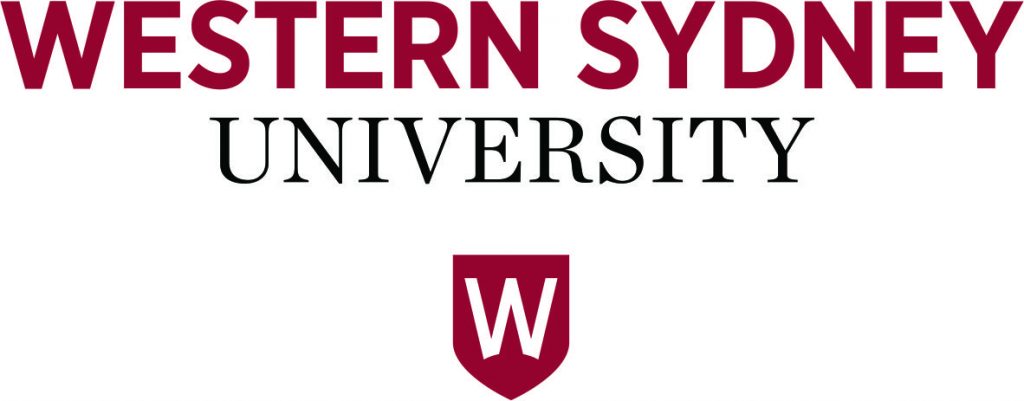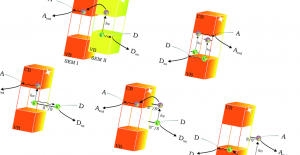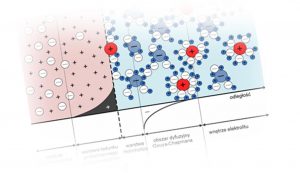
Scientific cooperation
The cooperation with Prof. Janusz Nowotny and Prof. Tad Bak reaches new level – Marcin Kobielusz spends two month as a visiting reasercher in School of Computing, Engineering and Mathematics, Western Sydney University.



The cooperation with Prof. Janusz Nowotny and Prof. Tad Bak reaches new level – Marcin Kobielusz spends two month as a visiting reasercher in School of Computing, Engineering and Mathematics, Western Sydney University.



We are glad to inform that we are looking for people to work within the OPUS 12 project “Remotely light-controlled activity in dyes, proteins, catalysts: imaging, sensing, energy conversion”.
More detailed offer can be downloaded from following link:
![]()


The Team of Photocatalysis has two new members: Dr. Taymaz Tabari from Iran joined us as a post-doc, while Mr. Kasidid Yaemsunthorn from Thailand will work on his PhD. Welcome to Kraków!

We are looking for postdoctoral fellow to work within the TEAM project “In quest of a more efficient quantum solar energy exploitation in energy downhill and uphill photocatalytic processes (INGENIOUS)”
More info can be found here.


We are glad to inform that we are looking for people to work within the TEAM project “In quest of a more efficient quantum solar energy exploitation in energy downhill and uphill photocatalytic processes (INGENIOUS)”
Offers and application form can be downloaded from here.


On October 26, 2016, the President of the Republic of Poland, Andrzej Duda, nominated 99 academic teachers and employees of science and art at the Presidential Palace in Warsaw. Among the nominees there was Wojciech Macyk.

(photo by Krzysztof Sitkowski / KPRP)

Rafał Sadowski has got his PhD degree. Congratulation!
Photocatalytic coatings for medicine and food industry
The main goal of the doctoral thesis was to obtain stable and photoactive upon visible light irradiation semiconductor coatings on various polymers. A further purpose of this study was to understand the nature of semiconductor particles binding to polymer surface and determination of physical and chemical properties of the photocatalytic coatings. Additionally, the most active coatings were subjected to microbiological tests based on a modified ISO standard. The goal has been achieved by three steps procedure: activation, immobilization and sensitization. The crucial step was activation of the polymer surface by a low temperature oxygen plasma. It was shown that plasma pre-treatment is essential for oxygen groups formation which contribute to titanium dioxide binding to the polymer surface. Unmodified TiO2 can only be used as a photocatalyst active under ultraviolet (UV) light, which limits future applications. For this reason coatings were photosensitized by titanium(IV) surface charge transfer complexes formed by impregnation with organic ligands (catechol, 2,3-napthalenediol, pyrogallol, salicylic acid, ascorbic acid and rutin). Moreover, the efficacy of such coatings against Escherichia coli and Staphylococcus aureus was demonstrated.


Tomasz Baran has got his PhD degree. Congratulation!
Photocatalytic reduction of carbon dioxide in hybrid systems
Carbon dioxide utilization may contribute to controlling its atmosphere level, reducing the emission and recycling carbon. Various methods of CO2 reduction are under intensive study, including photocatalysis that is promising, environmentally friendly technique of solar to chemical energy conversion. Three strategies of CO2 reduction to useful chemicals and fuels were investigated: photocatalytic carboxylation of organic compounds with CO2 reducing coupling, photocatalytic CO2 reduction to C1 compounds and bioinspired systems for CO2 reduction to methanol by an enzymatic way with photocatalytic regeneration of coenzyme. Carboxylation of acetylacetone and 2,3-dihydrofuran with carbon dioxide has been performed by using ZnS-based photocatalysts. The formation of carboxylic acid, as proven by 13C NMR, GC-MS and IR, was observed. The reaction efficiency was enhanced after modification of ZnS with ruthenium nanoparticles. The reaction involves one-electron reduction of CO2 to CO2.-with photogenerated electrons from the conduction band of ZnS and one-hole oxidation of organic substrates to the relevant radical. Coupling of formed radicals leads to the formation of carboxylic acids through C-C bound formation. Multielectron CO2 reduction to C1 molecules has been studied using various neat and modified materials: ZnS, CuI, NiO, CuS. HCOOH and CO were found as the main reduction products. The amount and ratio of products were influenced by the type of materials, the presence of deposited ruthenium(0) nanoparticles at the surface of materials and solvent polarity. Last approach of CO2 utilization based on photochemical regeneration of NADH for the enzymatic CO2 to CH3OH reduction through the enzymes cascade: FateDH, FaldDH and ADH. A series of photocatalysts was employed as photocatalyst of reduction of NAD+ to NADH under visible light irradiation. TiO2 photosensitized with organic dye and inorganic chromium complexes, narrow band gap photocatalysts such as Cu2O and InVO4 as well as ZnS doped with iron or cobalt cations seems to be the most promising photocatalysts. Thorough investigations led to the development of a photocatalytic systems constructed of photocatalyst and electron mediator that yield in selective and efficient regeneration of 1,4-NADH isomer.studied processes can find applications for the solar-light-driven green synthesis of fuels or Cn+1 carboxylic compounds from Cn substrates by utilizing carbon dioxide.


Elżbieta Świętek has got her PhD degree. Congratulation!
Redox Characteristics of Semiconducting Photocatalytic Materials
The aim of the studies was to develop the method based on spectroelectrochemical measurements, which allows for the characterization of redox properties of various types of semiconducting materials, including determination of the impact of structural modification and surface as well as the influence of the experimental conditions on the redox properties of the semiconductors. As a part of this work a concise description of the methods used for characterization of redox properties of semiconducting photocatalytic materials was carried out and a novel model of photoinduced electron transfer in nanocrystalline semiconductor electrodes was proposed. An important part of the dissertation was the elaboration of the spectroelectrochemical method. The extension of the method is based on the application of the reflectance spectroscopy and analysis of the experimental conditions influence on VON values. The determined potentials correspond to the process of electron trapping on the available energy states close to the edge of the conduction band. The influence of several parameters like oxygen concentration, potential sweep rate, pH and the type of electrolyte, were discussed. The developed spectroelectrochemical method was also used for characterisation of the energy states lying close to the edge of the conduction band. Additional energy states of TiO2.(P25), localized within the bandgap, were qualitatively characterized. The applicability of the method to determine deep and shallow electron traps was confirmed. A quantitative analysis of shallow electron traps was also conducted using a modification of the spectroelectrochemical method by designating the distribution of electron density of states for selected samples. A wide range of applications of the new measurement method was discussed on the basis of measurements carried out for different semiconductors.
